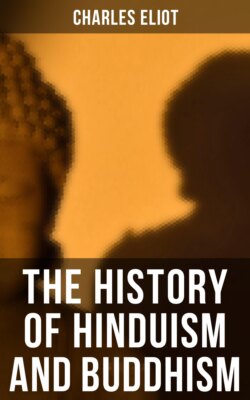Читать книгу The History of Hinduism and Buddhism - Charles Eliot - Страница 21
На сайте Литреса книга снята с продажи.
15. Eastern Polytheism
ОглавлениеTable of Contents
Different as India and China are, they agree in this that in order not to misapprehend their religious condition we must make our minds familiar with a new set of relations. The relations of religion to philosophy, to ethics, and to the state, as well as the relations of different religions to one another, are not the same as in Europe. China and India are pagan, a word which I deprecate if it is understood to imply inferiority but which if used in a descriptive and respectful sense is very useful. Christianity and Islam are organized religions. They say (or rather their several sects say) that they each not only possess the truth but that all other creeds and rites are wrong. But paganism is not organized: it rarely presents anything like a church united under one head: still more rarely does it condemn or interfere with other religions unless attacked first. Buddhism stands between the two classes. Like Christianity and Islam it professes to teach the only true law, but unlike them it is exceedingly tolerant and many Buddhists also worship Hindu or Chinese gods.
Popular religion in India and China is certainly polytheistic, yet if one uses this word in contrast to the monotheism of Islam and of Protestantism the antithesis is unjust, for the polytheist does not believe in many creators and rulers of the world, in many Allahs or Jehovahs, but he considers that there are many spiritual beings, with different spheres and powers, to the most appropriate of whom he addresses his petitions. Polytheism and image-worship lie under an unmerited stigma in Europe. We generally assume that to believe in one God is obviously better, intellectually and ethically, than to believe in many. Yet Trinitarian religions escape being polytheistic only by juggling with words, and if Hindus and Chinese are polytheists so are the Roman and Oriental Churches, for there is no real distinction between praying to the Madonna, Saints and Angels, and propitiating minor deities. William James[60] has pointed out that polytheism is not theoretically absurd and is practically the religion of many Europeans. In some ways it is more intelligible and reasonable than monotheism. For if there is only one personal God, I do not understand how anything that can be called a person can be so expanded as to be capable of hearing and answering the prayers of the whole world. Anything susceptible of such extension must be more than a person. Is it not at least equally reasonable to assume that there are many spirits, or many shapes taken by the superpersonal world spirit, with which the soul can get into touch?
The worship of images cannot be recommended without qualification, for it seems to require artists capable of making a worthy representation of the divine. And it must be confessed that many figures in Indian temples, such as the statues of Kâlî, seem repulsive or grotesque, though a Hindu might say that none of them are so strange in idea or so horrible in appearance as the crucifix. But the claim of the iconoclast from the times of the Old Testament onwards that he worships a spirit whereas others worship wood and stone is true only of the lowest phases of religion, if even there. Hindu theologians distinguish different kinds of avatâras or ways in which God descends into the world: among them are incarnations like Krishna, the presence of God in the human heart and his presence in a symbol or image (arcâ). It may be difficult to decide how far the symbol and the spirit are kept separate either in the East or in Europe, but no one can attend a great car-festival in southern India or the feast of Durgâ in Bengal without feeling and in some measure sharing the ecstasy and enthusiasm of the crowd. It is an enthusiasm such as may be evoked in critical times by a king or a flag, and as the flag may do duty for the king and all that he stands for, so may the image do duty for the deity.
